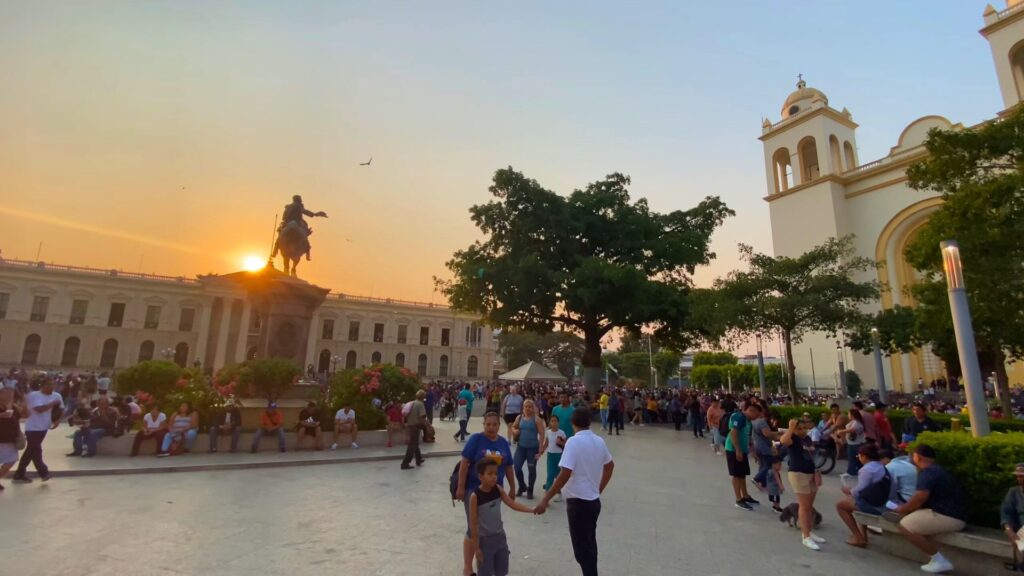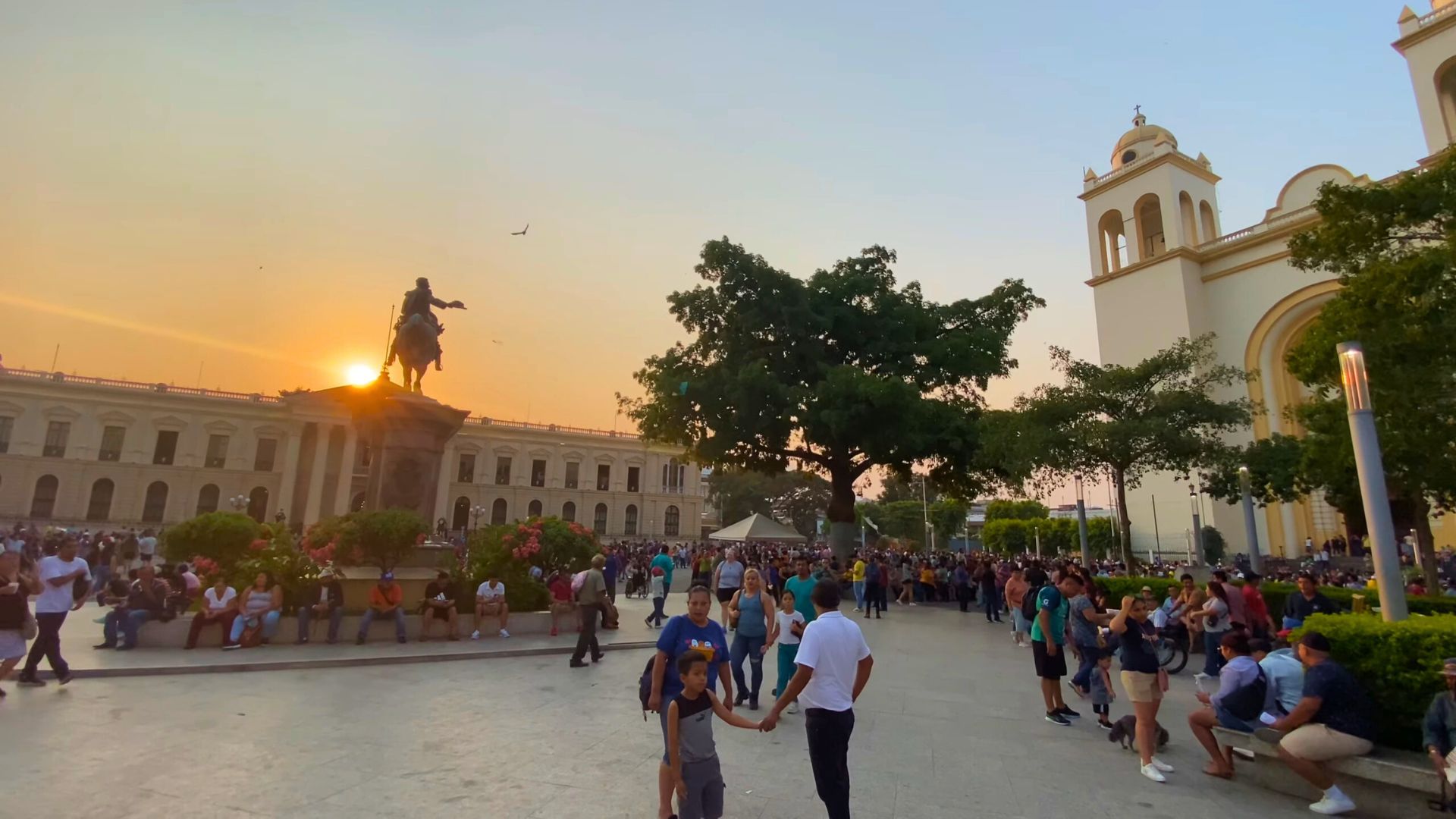Delve into the vibrant culture of El Salvador, a gem tucked away in Central America. It’s a land where age-old traditions blend seamlessly with modern influences, creating a rich cultural tapestry that’s as diverse as it is fascinating.
You’ll find El Salvador’s culture deeply rooted in its indigenous past, with influences from the Maya and Pipil civilizations. Yet, it’s also shaped by Spanish colonial history and contemporary global trends.
This cultural fusion is evident in every aspect of Salvadoran life, from its art and music to its food and festivals.
So, buckle up for an exciting exploration of El Salvador’s culture. It’s a journey that promises to be as colorful and captivating as the country itself.
Key Takeaways
- El Salvador’s culture is a diverse blend of indigenous roots, Spanish colonial influences, and modern global trends, impacting various facets of Salvadoran life, including music, art, food, and festivals.
- The Mayan and Pipil civilizations have significantly contributed to the modern Salvadoran cultural identity, as witnessed through architectural remnants of sites like Tazumal and Joyas de Cerén and traditional folkloric dances.
- Spanish colonization has notably influenced El Salvador’s culture, evident in the country’s predominant Spanish language, and the architectural styling of colonial towns like Panchimalco.
- Salvadoran cuisine is a compelling mix of indigenous and Spanish influences centered around staples like corn, beans, and local produce. A notable dish is Pupusa, a traditional corn tortilla filled with various stuffings.
- Salvadoran music dances to many tunes, highlighting the country’s modern influences. Traditional pipil music, the upbeat rhythms of cumbia, and modern reggaeton all contribute to the country’s cultural symphony.
- Integral Salvadoran celebrations like Día de los Muertos, Independence Day, and Semana Santa reflect the spiritual and patriotic fervor of the Salvadoran people.
- The Spanish language, spiced with local slang and expressions, is the main mode of communication in the country and plays a key role in reflecting El Salvador’s dynamic culture.
- Salvadoran culture is filled with vibrant arts and crafts, rich folk music and diverse dance styles that tell the country’s story and traditions.
Overview of El Salvador Culture

Diving deeper into the El Salvador culture, you’ll be captivated by its richness and diversity. Rooted in a historic past, nourished by different influences, the culture continues to evolve, echoing both tradition and progression. But what exactly makes it so unique?
Centuries ago, the mighty Maya and Pipil civilizations flourished in these lands. Their influence isn’t lost; it’s etched in various facets of modern El Salvador. From the architectural remnants you’d find in archaeological sites like Tazumal and Joyas de Cerén to the folklore dances telling ancestral tales. They offer a mesmerizing glimpse into the past.
Next came the Spanish colonial era. Spanning several centuries, it indelibly shaped El Salvador’s culture. The Spanish presence is notable in the country’s predominant language and the architectural styling of their colonial towns, like the heritage site of Panchimalco.
Also integral to Salvadoran culture is the country’s distinctive cuisine. It’s a compelling mix of influences centered around staples like corn, beans, and local produce. One such gastronomic gem is Pupusa, a traditional corn tortilla filled with a variety of stuffings, from cheese to pork. It’s not just food but a cultural emblem of the Salvadoran people.
While the past is paramount, El Salvador’s culture doesn’t shy away from modern influences. Their music, for example, dances to many tunes.
You’d hear traditional pipil music, the upbeat rhythms of cumbia, marimba, salsa, merengue and the more modern reggaeton all playing their part in the country’s cultural symphony.
Across all these spheres, colors, sounds, tastes, and stories blend to celebrate a rich, vibrant culture. One that’s truly Salvadoran, but also a testament to its layered history and the wider global trends.
Even though El Salvador’s culture is deeply rooted in its past, the country has a dynamic nature that readily embraces change. That’s what makes exploring it so engaging and rewarding. Every element of culture here tells a tale, a tale of the country, a tale of their spirit, and your exploration of it would indeed be a vibrant journey.
Cultural Influences
Dive deeper into the cultural tapestry of El Salvador as we explore its primary influences. Uncover vital elements shaping its customs, traditions, and identity through distinct phases of history.
Indigenous Roots
Don’t underestimate the power of indigenous roots in shaping a culture as rich and diverse as El Salvador’s. The remnants of the ancient Maya and Pipil civilizations provide a glimpse into a world filled with mystery, tradition, and creativity.
Explore the archaeological sites scattered throughout El Salvador. Discover an era marked by intricately carved sculptures, detailed ceramics, and monumental structures, all reflective of a profound cultural identity.
Immerse yourself in the rhythm of traditional dances echoing the tales of these past civilizations. The vibrant costumes, rhythmic beats, and choreographed movements are incredibly telling of the strong indigenous influence that has seeped into every aspect of Salvadoran culture.
Spanish Colonization

Transitioning from the ancient world, you enter the period of Spanish colonization. The arrival of the Spaniards in El Salvador mixed new world styles with the old. This fusion is evident in the language, architecture, and settlements.
Soak in the rich Spanish influences evident in the local language. Though Spanish is a globally spoken language, you’ll find Salvadoran vernacular is a unique blend of the old world’s tongue and indigenous dialects.
Admire the blend of architectural styles amid historic towns like Panchimalco. The quaint cobblestone streets, towering Churches, and colonial facades quite noticeably reflect the Spanish taste intertwined with indigenous artistry.
Modern Influences
Leap into the present day. Salvadoran culture, while deeply rooted in history, is not immune to modern influences. These contemporary elements have further diversified and amplified the cultural significance of the country.
Nowhere is this modern influence more evident than in the realm of music. Sift through a countless array of genres, from the traditional pipil and cumbia to the global sensation of reggaeton. Each beat, each melody, adds a diverse note to the symphony that is El Salvador’s culture.
Indulge in the culinary delights defined by a mixture of traditional and contemporary preferences. The humble pupusa, the national dish, is a testament to the perfect blend of old-world techniques and modern flavors.
From then to now, the cultural influences of El Salvador have been an enthralling journey. One that continues to shape the vibrancy of this delightful nation.
Traditional Customs and Celebrations

El Salvador’s vibrant culture is as colorful as its traditional festivals and celebrations. These customs and celebrations are unique reflections of the Salvadoran spirit. As you experience these vibrant local traditions, you’ll begin to understand the depth of El Salvador’s rich cultural heritage.
Independence Day

Another major celebration is Independence Day, falling on September 15 each year. During this nationwide celebration, Salvadorans pay tribute to their forebears who fought for the country’s independence. City streets and buildings are adorned with blue and white — the national colors — while schools and communities participate in parades and concerts. It’s a day marked by patriotic fervor and a resounding sense of national pride.
Semana Santa

One of the country’s most deeply emotional periods, Semana Santa (Holy Week), is practiced in the week before Easter. This spiritual tradition transcends the boundaries of religion, impacting the daily life of nearly every Salvadoran.
Salvadorans commemorate Semana Santa with processions, elaborate alfombras (carpets made of dyed sawdust and flowers), and traditional Holy Week cuisine.
The passion and dedication that goes into the preparation of Semana Santa are a testament to the Salvadoran community’s unwavering faith.
As we continue to navigate the cultural corridors of El Salvador, we’ll delve into more such indelible customs and celebrations that shape the lives of this vibrant population.
El Salvador’s culture is a rich kaleidoscope of experiences waiting to be explored.
Languages and Communication
Delving deeper into the heart of El Salvador’s culture, you’ll find a rich linguistic landscape. Languages not only provide the means of communication but also reflect the nation’s history and character.
Spanish Language
The official language of El Salvador is Spanish which is spoken by almost all the population. This dates back to the Spanish conquest in the 16th century, which brought about significant changes in the country’s cultural and linguistic makeup.
Despite the passage of time, the country’s linguistic roots still owe their depth to early indigenous languages like Pipil and Lenca.
However, it is surprising that Salvadoran Spanish can sound quite distinct compared to the Spanish spoken in Spain or even other Latin American countries. This is due to regional influences and slang usage that provides it its unique flavor.
Local Slang and Expressions
What truly adds color to the Salvadoran Spanish are the local slang and expressions. These terms, locally called ‘caliche,’ are sprinkled generously in day-to-day conversations and are central to Salvadoran communication. Mastering these expressions is essential in fully grasping the country’s culture.
Ever heard of the term ‘Chamba’? In El Salvador, it’s quite often used to refer to ‘work’ or a ‘job.’ On the other hand, ‘chivo’ means ‘cool’ or ‘awesome,’ a term you’ll frequently encounter from the locals.
These local slangs reflect a distinct sense of humor and attitude in Salvadoran Spanish. They also reflect El Salvador’s dynamic culture, where language serves as a vibrant and authentic canvas.
Music, Dance, and Arts
Delving deeper into the heart of El Salvador, there’s a thriving artistic scene that combines traditional aspects with modern influences. Salvadoran music, dance, and arts evoke an authentic charm that engages visitors and locals alike.
Traditional Folk Music

Folk music remains an essential part of Salvadoran culture. The indigenous Pipil and Lenca roots have notably influenced the genre. Think unique rhythms characterized by the marimba, a percussion instrument native to Central America. Here’s a taste of traditional Salvadoran music:
- Tambor: Often played at local festivities
- Teclas: An exciting blend of indigenous and Spanish influences
- Cumbia: A genre with African roots that originated in Colombia but is widely popular in El Salvador
Immersing in its folk music means experiencing Salvadoran history, tradition, and spirit at its finest.
Dance Styles
Salvadoran dances are as colorful and diverse as their music. They vary from region to region, with each dance telling a unique story. Featured below are well-known traditional Salvadoran dances:
- El Torito Pinto: A dance that mocks the Spanish colonialists
- El Baile de Los Historiantes: A dance that narrates stories of saints and local heroes
You’ll not only enjoy the vibrant beats but also get an insight into the local legends and traditions.
Handicrafts and Artistry

While music and dance represent the Salvadoran soul, the crafts and artwork depict the country’s creativity. Talented Salvadoran artisans symbolize the nation’s remarkable imagination and resourcefulness.
- La Palma: The craft of painting intricate designs on wood, primarily palm wood
- Textiles: Traditional weaving and embroidery techniques to create beautiful garments or household items
- Ceramics: Pottery making has been a part of Salvadoran culture since pre-Columbian times
The handmade products, infused with Salvadoran aesthetics, have a unique charisma that’s impossible to ignore. Whether it’s the vibrant colors or the fascinating craftsmanship, you’ll be in awe of the Salvadoran artisans’ originality.
Cuisine
El Salvador’s culture extends far beyond its imaginative arts and vibrant dance forms. The nation’s cuisine, a culinary canvas owing its flavors to indigenous, Spanish, and other Latin influences, adds splashes of unique taste profiles, celebrating a story that’s as complex and captivating as the country’s history.
Typical Dishes

Discover the Salvadoran kitchen’s rich and varied spread, beginning with the ever-popular Pupusas. If you aren’t acquainted with El Salvador’s official dish yet, think of it as a thick, stuffed corn tortilla, often filled with cheese, beans, or pork.

Next on the list is Yucca con Chicharrón, a winning combination of boiled yucca root served with crispy fried pork. No dive into Salvadoran cuisine is complete without the Sopa de Pata. This hearty soup boldly features cow’s hoof among its ingredients.
Popular Ingredients
With an understanding of its typical dishes, let’s delve into the staples of Salvadoran cuisine. Corn, the foundation of many Mesoamerican diets, stars in Salvadoran meals, retiring in various forms from tortillas to Tamale.
Beans and rice often accompany every Salvadoran dish, forming the backbone of the nation’s dietary culture.
The country’s bountiful agriculture also breeds a fondness for vegetables. Here, you’ll find yucca, tomatoes, and plantains woven into a diverse craft of mouthwatering dishes.
Furthermore, coastal access means seafood reigns supreme, with a range of fish and shrimp variations adorning the Salvadoran table.
Dining Etiquette
The dining etiquette in El Salvador mirrors its people’s warm and welcoming nature. To get an authentic Salvadoran dining experience, immerse yourself in the local custom of sharing meals.
Families often dine together with ease and familiarity. As a show of respect, guests wait to be seated by the host.
The dining etiquette in El Salvador mirrors its people’s warm and welcoming nature. To get an authentic Salvadoran dining experience, immerse yourself in the local custom of sharing meals. Families often dine together with ease and familiarity.
As a show of respect, guests wait to be seated by the host. Finally, keep in mind that Salvadorans’ warm hospitality often means that declining food might be taken as a slight. The best way around this? Just sit back, relax, and dive into the flavors that Salvadoran cuisine has to offer – a gastronomic journey you’re bound to enjoy.
Conclusion
You’ve journeyed through the vibrant culture of El Salvador, experienced its culinary diversity, and felt the warmth of Salvadoran hospitality.
The food, a delectable fusion of indigenous, Spanish, and Latin influences, is a testament to the country’s rich cultural heritage. You’ve sampled traditional dishes like Pupusas, Yucca con Chicharrón, and Sopa de Pata, each bursting with unique flavors.
Dining etiquette in El Salvador is all about sharing meals and respecting hosts. Remember, Salvadoran culture is not just about food.
It’s about the people, their traditions, and the experiences they share. So, when you’re next in El Salvador, embrace the culture, savor the food, and immerse yourself in the Salvadoran way of life.



